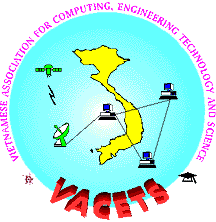A
Brief Note On protection of Public Water Supply Sources (*)
Binh Anson,
Ph.D. - Authority of Western Australia
All countries
have experienced serious water supply contamination problems. In the USA
cleaning up groundwater is a major industry and work still outstanding
is estimated to cost 250 billion US dollars. The US Environmental Protection
Agency has found that pesticide contamination of 10% of public water supply
wells has occurred. In the UK, an outbreak of water borne cryptosporidium
infected 470 people in 1990. In the same year, 5.3 million people were
supplied with water contaminated with nitrate at levels above drinking
water health limits.
In Western
Australia, contamination is also a problem. Many of our sources are contaminated
with salt which has been accumulated in the soil profile for many years.
Many of the water resources that remain fresh are now under the threat
of contamination from land development.
Any substances
on or in soils that can be dissolved or carried by water will contaminate
the water. Unfortunately, most thing we do place the water at risk. Fertilisers,
fuels, solvents, domestic and industrial waste, heavy metals and pesticides,
are some of the widely used substances that can make water unsafe to drink.
All activities
on land may cause a degree of contamination. Activities with a high risk
of contamination, or for which pollution control will be expensive, should
be directed to areas where they will not cause signifivant damage to the
water source. Activities such as residential development and agriculture,
that are a source of diffuse contamination and will cause slow degradation,
should be excluded from areas where we wish to preserve a higher water
quality.
Integrated
land and water resource planning is the essential first step in limiting
development to activities that can be undertaken in a way that prevents
contamination. Public planning exercises, such as the preparation of land
use and water management strategy in a groundwater catchment area, are
an excellent way to delineate and protect water source areas. However these
plans are not mandatory and ad-hoc development projects over groundwater
recharge areas can undo the planning effort unless the strategies are incorporated
into town planning schemes.
The next step
in protecting water sources is the development of catchment (**) land management
programmes that incorporate catchment protection requirements. These programmes
should meet the needs of all interested parties. A catchment land management
programme should address matters that influence water quality: such as
fuel storage, waste disposal, waste water treatment, clearing, vegetative
buffer zones and the use of substances that can contaminate water including
pesticides and fertilisers.
By-laws are
used to limit the use of certain substances and to control the way in which
contaminating activity is undertaken. The by-laws are the last line of
defence against contamination. They can "fine tune" good planning
to reduce the risk of contamination but they cannot fix bad land planning
decisions.
Technology
sometimes allows us to clean up contaminated water. Even sewage can be
made safe to drink. Many countries around the world rely on water sources
that are polluted and must be treated to produce water with safe levels
of contaminants. We are fortunate in that we still have uncontaminated
sources. The cost of our water is lower and the safety is higher.
In summary,
the following steps are required for effective public drinking water source
protection:
1. Develop
a land use and water protection strategy. 2. Declare the water source protection
areas. 3. Incorporate the strategy into land planning scheme. 4. Develop
effective and appropriate water quality protection by-laws. 5. Enforce
the schemes, plans, and by-laws.
-------------
Notes:
(*) Excerpt
from a draft report on By-laws and Catchment Protection, being finalised
for the Water Authority of Western Australia.
(**) In the
Australian (and UK) context, "catchment" has the same meaning
as "watershed" used in the US.
oOo
Binh Anson,
B.E, M.E., Ph.D. Senior Engineer Catchment Management Planning Water Authority
of Western Australia
Email: [email protected]
October, 1994
Binh
Anson, Ph.D.
[email protected]
For
discussion on this column, join [email protected]
Copyright
© 1994 - 1997 by VACETS and Binh Anson
:
